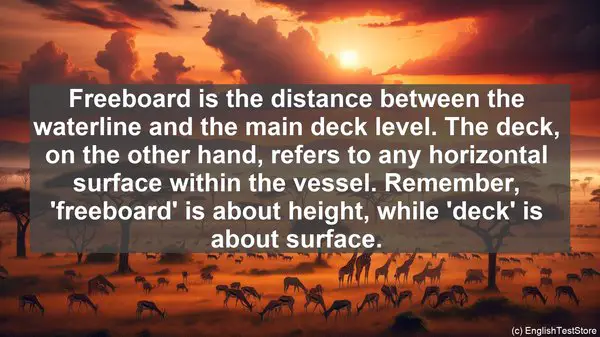Introduction
Welcome to today’s lesson on naval architecture. In this lesson, we’ll be discussing the top 10 commonly confused words in this field. Understanding these words is crucial for clear communication and accurate documentation in naval architecture. So, let’s dive right in!
1. Bow vs. Stern
The bow refers to the front of a vessel, while the stern is the rear. Remember, ‘bow’ sounds like ‘forward,’ and ‘stern’ rhymes with ‘return.’
2. Port vs. Starboard
When facing the bow, ‘port’ refers to the left side of the vessel, while ‘starboard’ is the right side. A helpful trick is to remember that ‘port’ and ‘left’ have four letters each.

3. Draft vs. Draught
Both terms refer to the depth of a vessel’s submerged part. However, ‘draft’ is commonly used in American English, while ‘draught’ is more prevalent in British English.
4. Displacement vs. Deadweight
Displacement is the weight of the water displaced by a vessel, while deadweight refers to the total weight a vessel can carry, including cargo, fuel, and crew. Remember, ‘displacement’ focuses on water, while ‘deadweight’ encompasses everything.
5. Keel vs. Hull
The keel is the central structural element running lengthwise along the bottom of a vessel, while the hull refers to the entire body. Imagine the keel as the vessel’s backbone, providing stability and strength.
6. Bilge vs. Bulkhead
The bilge is the lowest part inside a vessel’s hull, often prone to water accumulation. On the other hand, a bulkhead is a vertical partition that separates different compartments within the vessel.
7. Freeboard vs. Deck
Freeboard is the distance between the waterline and the main deck level. The deck, on the other hand, refers to any horizontal surface within the vessel. Remember, ‘freeboard’ is about height, while ‘deck’ is about surface.
8. Beam vs. Length
Beam refers to the width of a vessel, while length is the measurement from the bow to the stern. A simple way to remember is that ‘beam’ sounds like ‘wide,’ while ‘length’ is about the entire span.
9. Knot vs. Nautical Mile
A knot is a unit of speed, equivalent to one nautical mile per hour. A nautical mile, on the other hand, is a unit of distance, approximately 1.15 statute miles. Remember, ‘knot’ is about speed, while ‘nautical mile’ is about distance.
10. Rudder vs. Propeller
The rudder is a movable device used for steering a vessel, while the propeller is responsible for propulsion. Think of the rudder as the vessel’s ‘steering wheel’ and the propeller as its ‘engine.’

